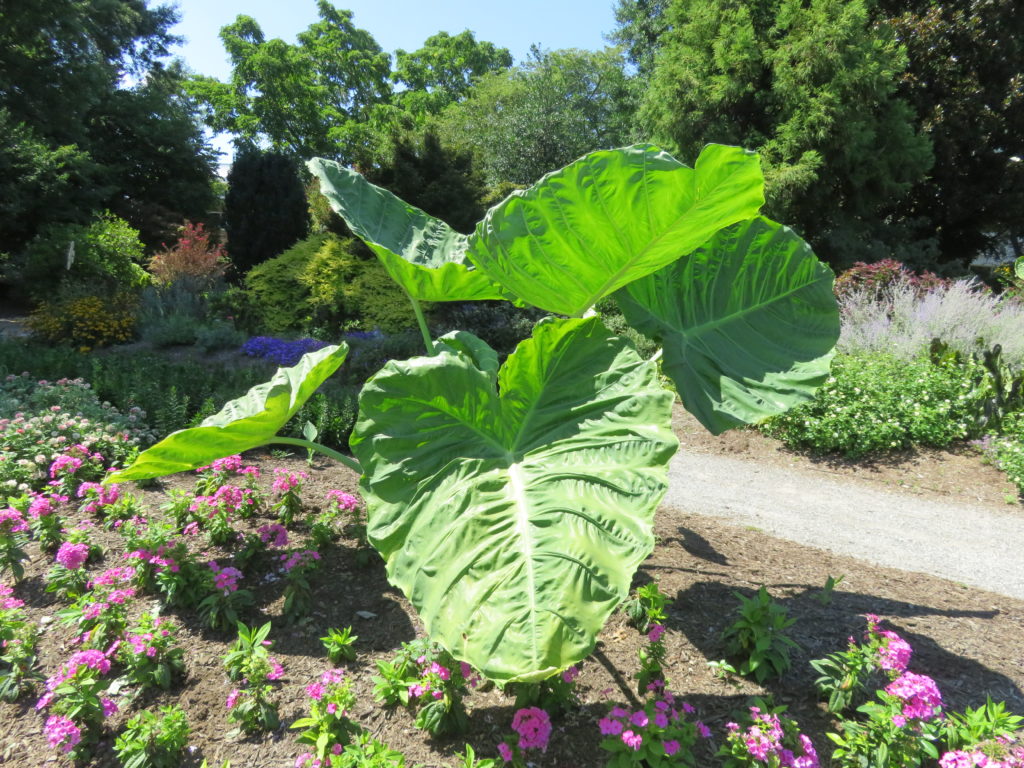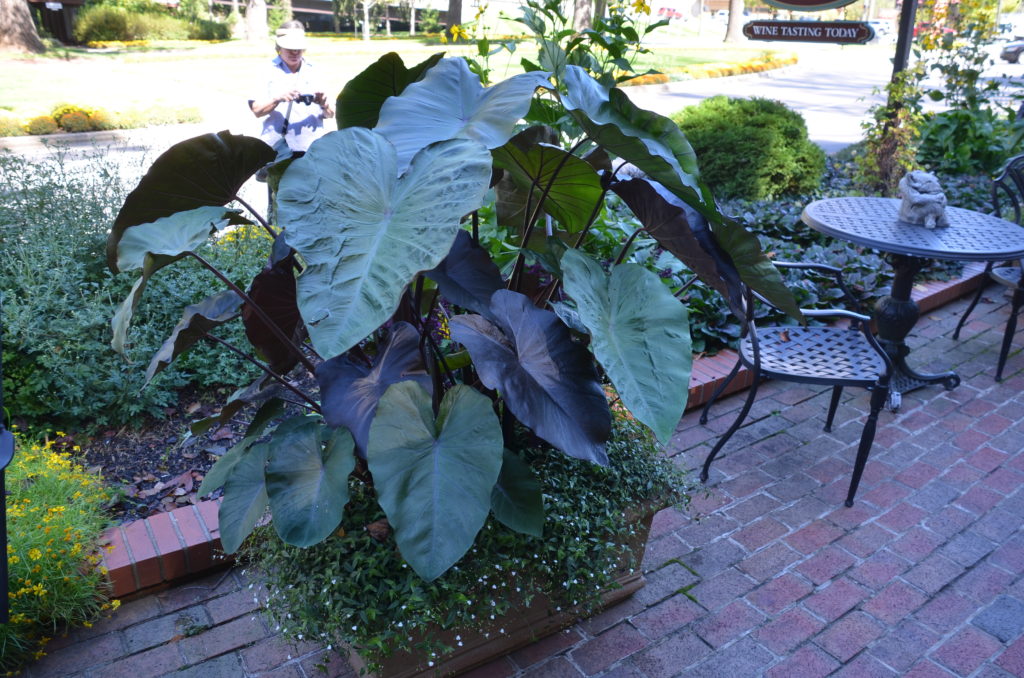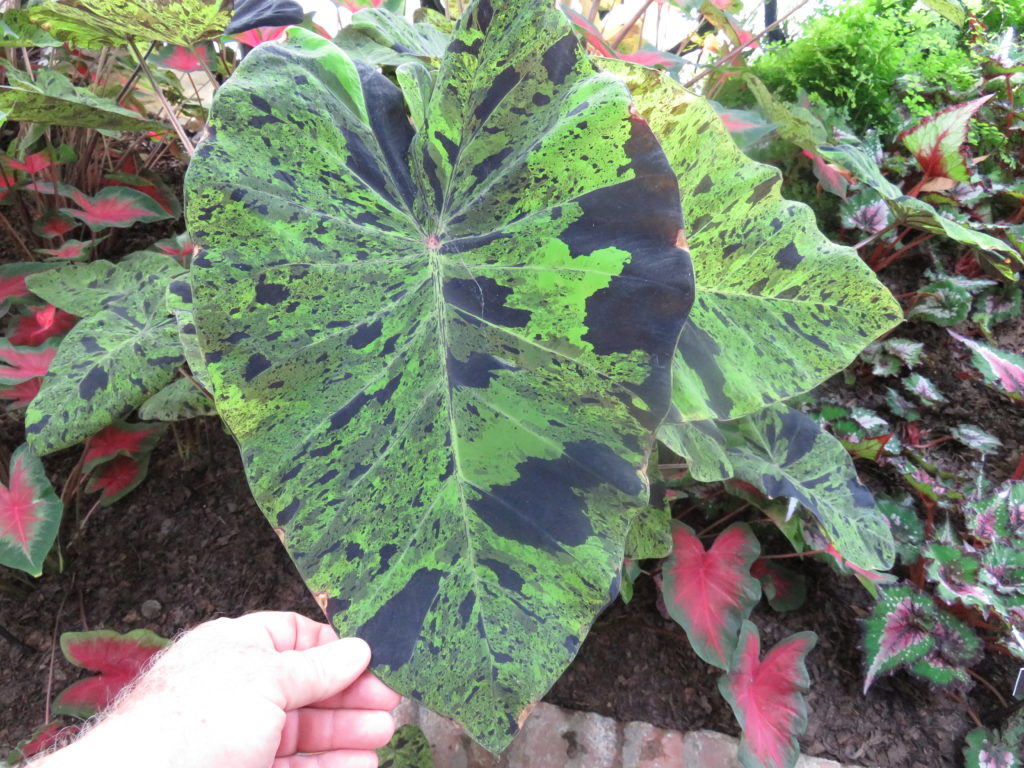
If gardeners want to add some tropical punch to the garden, elephant ears (Colocasia esculenta) and a close botanical cousin (Alocasia) are one of the first plants that I recommend (USDA hardiness zones 7b-10). Also called ornamental taro, plants take off and grow rapidly after spring planting (when all threats of freeze injury have waned). In the deep South, elephant ears are a garden fixture for 9-10 months before declining for a short winter dormancy nap.
Over the years I have grown the smaller (up to 6 feet tall) varieties in my small garden like ‘Black Magic (black matte finish), ‘Mojito’ (dark green /dark mottled patches), and ‘Tea Cups’ (cupped leaves that fill and spill water during rains).

For larger spaces Colocasia ‘Diamond Head’, ‘Black Coral’, and ‘Kona Coffee’ are striking for their dark leaf color and Colocasia ‘White Lava’ and ‘Maui Gold’ (chartreuse-gold blend) for their bright cheeriness. The largest Colocasia is C. gigantean ‘Thailand Giant’ that support leaves that grow 2-4 feet long.
Colocasia is a tender perennial that cannot survive winter months in many places. In USDA Zones outside of 7b-10, either use this tropical plant as an annual or dig up the tuber after the first frost and overwinter it in a cool dry area (possibly in dry wood shavings or peat) where the temperature does not fall below 45°F. The tuber should then be replanted again in late April. An easier method is to treat Colocasia as a container plant and move the container inside during the winter, given that you have space for such a large container.
Colocasia/Alocasia plants grow best in partial shade to partial sun. Full sun exposure, especially in warm areas, may damage these plants. They grow rapidly during the warmest days of summer. Feed plants with a slow-release fertilizer like Osmocote™ or Nutricote™ or a water soluble fertilizer like Miracle-Grow™ or Peters™. Don’t forget to irrigate –frequent watering, Plants prefer soils that drains well and does not stay soggy. In particular, Alocasia planted in very wet locations for extended periods is prone to root rot. Colocasia, on the other hand, grows best with full sun exposure and thrives in wet soil or in standing water.
Elephant ears can be grown in garden beds and in containers. Sources to buy include independent garden centers, mail order, and local nurseries.

Warning: Alocasia leaves are very poisonous plant. Keep the plant away from children and pets and call your doctor, or vet if someone or a pet ingests the plant leaves.

 Posted in
Posted in 
